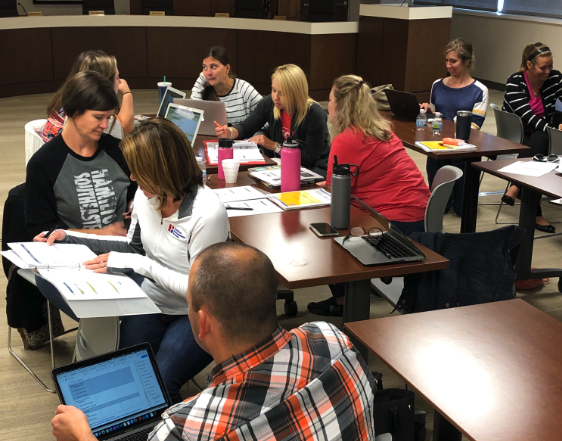Photography Provided
When a tragic event occurs in a school setting, the physical, emotional and psychological effects on students and staff can be extensive and complicated. PREPaRE, a training curriculum developed by the National Association of School Psychologists (NASP), provides resources and consultation related to such occurrences, and strengthens school safety, crisis management and emergency response.
Hamilton County school leaders recently incorporated the PREPaRE curriculum in an effort to improve crisis management, and Brooke Lawson, mental health and school counseling coordinator for Hamilton Southeastern Schools, says the initiative came about following the Noblesville West Middle School shooting that occurred in May 2018 and left two injured.
“There was a team of us that helped support Noblesville through that tragedy and it made us decide that we didn’t have a great model in our county for how to respond and support the mental health of people who have been through crisis situations,” Lawson says. “We started doing research around that and found the PREPaRE model.”
PREPaRe training is designed to equip leaders with the knowledge to respond effectively during a school crisis and meet the mental health needs of students and staff members after that crisis occurs. The model offers school-based mental health professionals and other education professionals training around a sequential set of actions, including:
• P – Prevent and PREPaRE for psychological trauma
• R – Reaffirm physical health and perceptions of security and safety
• E – Evaluate psychological trauma risk
• P – Provide interventions
• a – and
• R – Respond to psychological needs
• E – Examine the effectiveness of crisis prevention and intervention
 All Hamilton County school districts have taken on the model according to Lawson, and leaders and administrators throughout the county completed PREPaRE training sessions in late August.
All Hamilton County school districts have taken on the model according to Lawson, and leaders and administrators throughout the county completed PREPaRE training sessions in late August.
“We now have leaders identified for every school district,” Lawson says. “We’re trying to make sure that the county and our districts are well prepared to respond to crisis situations and support the mental health of victims. We’re still working to get structures in place so each of the schools has a specific system that works for them.”
Freedom Kolb, special projects officer for Hamilton Southeastern Schools, adds that the PREPaRE model accounts for all manner of crisis situations that can occur within a school setting, including violent acts and natural disasters.
“One of the things that attracted us to the PREPaRE model is that it’s a crisis intervention and response model designed specifically for schools,” she says. “There are a lot of crisis intervention programs out there, but the NASP model specifically deals with the unique challenges in school situations. It trains you to triage and serve the needs of students, and also considers the teachers, parents, and other adults in the buildings as well.”
Kolb says Hamilton Southeastern Schools currently has a team of 10 trained professionals who are able to intervene immediately during and after a crisis and each school district in the county has a different number of trained PREPaRE leaders depending on district size.
The model works in a tiered structure when a tragedy occurs, whereby PREPaRE-trained professionals assess who has been most affected, and the ways leaders can help individuals and groups.
“PREPaRE looks at what everybody who’s been affected needs – and maybe that’s a classroom-wide conversation around what happened, and not necessarily a therapy session – and then from there it looks at who needs individual or group debriefing,” Lawson explains. “If they’re more comfortable talking in a group to a trained professional then we have that in place, or there’s one-on-one support. So, there’s a triage in place to help on all levels.”
After the initial triage process, each school can also bring in outside resources depending on the situation at hand, such as a dedicated crisis phone line or therapy dogs.
“One thing I really like about this model is that it takes a look at safety and security through the lens of physical and psychological safety, and how you really shouldn’t have one or the other – they go together,” Lawson says. “Traditional models have looked at physical safety and not taken into account the psychological safety, and the effects there.”
Lawson feels programs like PREPaRE are helping to combat the stigma around mental health and making it easier for people of all ages to seek help when needed.
“I don’t feel like the young people today feel as much of that stigma as maybe the older generations do,” she says. “Both of our high schools have clubs called Bring Change to Mind, and their whole goal is to reduce the stigma surrounding mental illness in schools and the community. Our students are changing the conversation.”
For additional details on the NASP PREPaRE curriculum, go to nasponline.org/professional-development/prepare-training-curriculum.
Visit hseschools.org/counseling/social-emotional for info on Hamilton Southeastern Schools counseling services.






